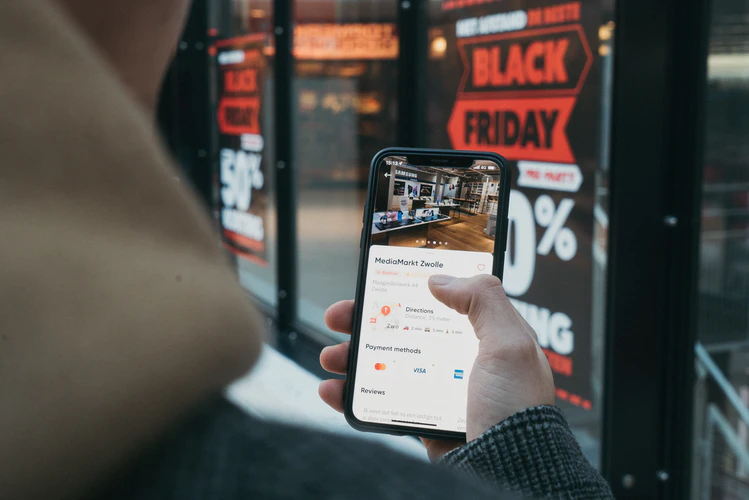The Importance of Responsive Web Design for an eCommerce Store
Consumers today use different devices when shopping online, which means that you need a responsive eCommerce web design so they can buy easily regardless of the device they use.
In 2021, Statista estimated that 54% of all eCommerce transactions were via mobile. However, even with the increasing use of mobile phones, only 12% of consumers find it convenient to shop online using the mobile web.

In designing your eCommerce store, one of the things you have to consider is the responsiveness of the design. Having a responsive design provides several benefits for your eCommerce store to improve conversion. The volume of conversions via a smartphone will reach $418.9 billion in 2024, making it all the more important to have a responsive eCommerce web design.
From mobile phones to tablets and varying desktop monitor sizes, it gets tricky to have a one-size-fits-all design for your eCommerce store. A responsive design, on the other hand, makes your website adjust to various screens and browsers. Other than that, there are more advantages of a responsive eCommerce store.
Why Is Responsive Web Design Important?
Let's explore some of the benefits of a responsive web design to know how it can provide a better online shopping experience for your buyers.
1. Reach more online shoppers on a mobile device
Apart from desktops, shoppers also use smartphones and tablets to view an eCommerce store. When you have a responsive eCommerce web design, your online store will look proper on either desktop, mobile, or tablet.
You are not only limiting your eCommerce store to buyers on a desktop computer. Instead, they can do their online shopping even while using a mobile phone.
2. Providing consistency in store branding and functionality
Another importance of a responsive web design is a seamless experience without the need for separate mobile portals.
Instead of a separate subdomain or website altogether, online shoppers can readily input the same URL on their mobile devices. Additionally, you have a coherent design regardless of the device that the buyer is using. Thus, you're maintaining a consistent look and feel of your eCommerce store with a responsive design.
3. Positive user experience
Creating a better experience for your online shoppers comes with a responsive design. No matter what device a buyer uses, the buttons, product images, and overall online shopping experience will be cohesive.
Instead of users clicking frustratingly on small or inaccessible CTAs, a responsive eCommerce store helps them get to their intended page or product listing.
With an eCommerce website that adapts easily to the user's device, you can craft a better user experience. One that makes it easy for them to shop and transact regardless of their screen size.
4. Cost-effective to build
Previously, websites had a mobile version on a different domain or subdomain. This method is an additional expense as you would need a separate CMS or extra website storage to duplicate the desktop version.
You will only need to have one website domain and hosting that contains the eCommerce store. A responsive eCommerce website already contains your product listings and company profile without the need to have a separate website that adjusts to a mobile or desktop format.
5. A quick way of updating products
Updating product listings is a lot easier and faster when you only access a single CMS.
Instead of switching to a different CMS, you can already list products or edit product information and make it reflect on a single website. Thus, it cuts the time it takes to modify your eCommerce store, especially when you're dealing with thousands of SKUs, as in the case of dropshipping.
6. Unified dashboard to monitor the online store
You can immediately monitor your website traffic and sales on a single dashboard that records the activities on both desktop or mobile devices. There is no more switching between different analytics or tracking accounts with a responsive eCommerce website.
With only one dashboard, you can see how many visitors and revenue data from desktop and mobile users on your blockchain e-commerce platform. Most website tracking analytics nowadays let you segment down to specific user devices, making it easier to make decisions on what to improve on your e-commerce store.
7. Improves SEO
A responsive design provides SEO benefits to help get your eCommerce store on the first pages of search engines.
A mobile-friendly website is one of the ranking signals of Google. This ranking factor applies to search results that show up on mobile devices. If your website only retains its native desktop layout, you may be losing opportunities with mobile shoppers.
Thus, you need your eCommerce web design to be responsive. Doing this gives your eCommerce store more chances to get to the top spot in the search engine results pages, particularly with Google.
How Do I Make My eCommerce Website Responsive?

If you check your eCommerce store and it's awkward on smaller devices, you need to implement a few fixes to make it responsive. Build an eCommerce store that is responsive enough by following these tips.
Have a fluid grid
The flow of your website design needs to have fluidity, which means that they adapt and move without breaking the entire structure. A fluid grid is one in which the columns are proportional to its container. The browser size will become the basis for how the content and spacing within a grid appear.
Achieving a fluid grid is possible with a mobile-first responsive design. What you do via this method is first to create a website design to fit on a mobile device instead of the usual way of designing on a desktop.
Text and images that adapt to the screen
A large image on a desktop may fill up the entire browser when the user views the content on a tablet or smartphone. Make the font and image size adjust to the screen of the website visitor.
Use vector files for images whenever possible. Vector file types such as SVG can expand to a larger size while maintaining the same image quality. It will not look pixelated, regardless of the browser or screen size.
Pick different elements for desktop and mobile
If adjustable files are not possible, use separate logos, icons, or even images that will only show if a user is on a desktop or a mobile device. This is particularly important when you want to maintain the aspect ratio of your images.
Consumers on either desktop or mobile will then find it convenient to process their transactions when you have separate website elements.
Media queries for multiple screen sizes
Through the use of CSS, you can specify which format of your website will appear according to the size of the screen. Implement a different stylesheet by following the average screen or browser sizes of widely-used devices. Your eCommerce store will then display different spacing and content sizes for a comfortable online shopping experience.
Choose a reliable designer
Alternatively, you can focus on building your eCommerce store by hiring a designer or outsourcing them to design agencies. Most designers and developers are already knowledgeable about creating a mobile-responsive website. They can modify your website and make it responsive.
Ideally, choose a designer who has experience in responsive eCommerce web design. Look for sample works to see if their skills and output will be relevant to your niche or eCommerce operations.
Third-party graphic design firms are available to help your eCommerce store become responsive. One such provider is Delesign. The on-demand service from Delesign comes with unlimited graphic designs and revisions. This service feature is useful when you need more changes until you have the eCommerce web design suitable for your business.



